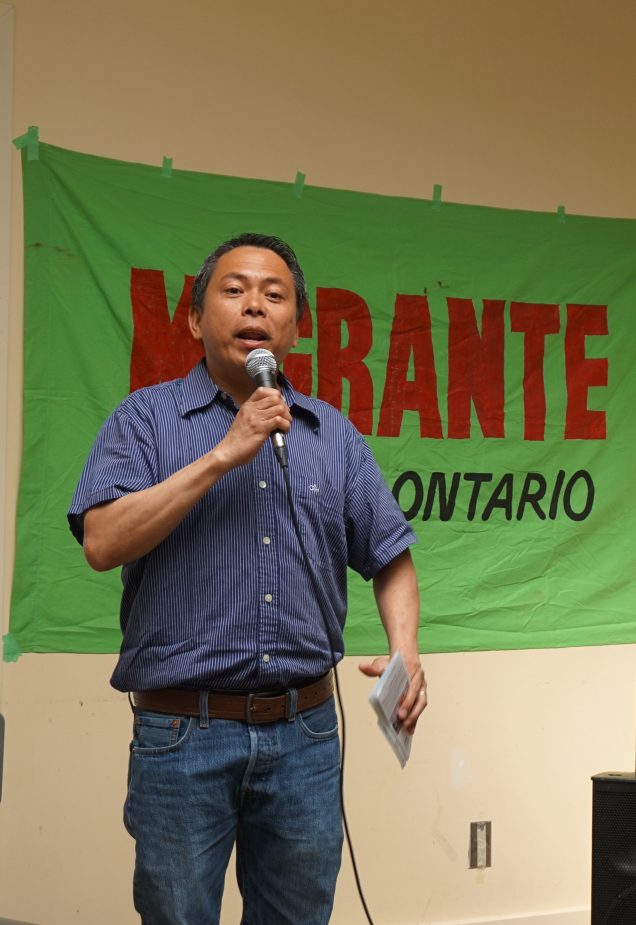Canada tightens some more its policy on temporary residents
Canada tightens some more its policy on temporary residents

Immigration, Refugees and Citizenship Canada Minister Marc Miller

JavierJardeleza-FISN
What’s next for temporary kababayans?
September 25, 2024
By Veronica C. Silva
LJI Reporter
The Philippine Reporter
Canada is once more tightening its policy around temporary residents, which include temporary foreign workers (TFW) and international students. On September 18, Canada laid out details of how it would trim the number to five percent of the population from the current 6.5%.
Among the changes would be further limits to the number of international student permits in 2025 and 2026 to 437,000 from this year’s target of 485,000 and revising the post-graduate work permit (PGWP) program by aligning it to immigration goals and market demands. The new cut for the next two years is 10% more from the 35% the Liberals have announced for 2024 from the previous year.
The latest is a follow through of an announcement last March by Immigration Minister Marc Miller who said he instructed his department to conduct a review of the temporary residence programs. Some 42 percent of temporary residents are international students, 26% are PGWP holders, nine percent are spouses of students, and nine percent are TFWs.
PGWP holders are former international students. After they complete their program, international students can apply for PGWP to gain work experience, and eventually apply for permanent residency if they qualify.
On September 18, Miller said that the number of temporary residents has increased “sharp(ly)” from 437,000 in 2019 to 1.2 million in 2023. International students alone numbered almost a million last year, he added, and “some of these students [are] facing difficulties in their journey.” These struggles have been widely documented in the media as Canada has time and again changed its policies around temporary residents.
Miller said the numbers grew as Canada faced labour shortages due to the pandemic. However, he said that Canada’s “economy has evolved, and our labour market has softened …,” but that “families and communities are now facing pressures and we need to take action.”
The pressures from the sudden increase in immigration, which have been widely documented and backed by data, are in housing and unemployment. Miller himself noted last week the “increases in unemployment amongst youth and newcomers.”
But the blame game did not stop there. On the same day of Miller’s announcement – with Randy Boissonnault, Minister of Employment, Workforce Development and Official Languages, whose department is responsible for the TFW program – Prime Minister Trudeau posted on X (formerly Twitter): “Immigration is an advantage for our economy — but when bad actors abuse the system and take advantage of students, we crack down.”
“There are always two sides to a story,” said Javier Jardeleza, Migrante Canada co-chair and coordinator of the Filipino International Students Network, on the blame anew on newcomers to Canada. Jardeleza was an international student and is currently awaiting his PGWP. “With or without international students, there is a housing crisis,” he added.
He noted what Canada has been saying all along – that international students contribute to the economy with their fees that are three times more than domestic students, and their jobs and taxes contribute to the economy.
Global Affairs Canada estimated that the economic activities of international students and their families reached $37.3 billion in 2022.
Migrant Workers Alliance for Change (MWAC), which advocates for migrants rights, said in a statement reacting to the recent announcement: ““The Ministers made no mention not even once about workers’ rights, instead continuing to obsess about numbers and cuts. The Ministers themselves said migrants are essential to the Canadian economy, but they don’t seem to care about the rights, working conditions and living conditions migrants have.”
Instead of focusing on cuts and streamlining the temporary residents streams, both MWAC and Migrante Canada reminded the Liberals of their regularization mandate from 2021 for the undocumented.
“Bilisan (fast track) the regulation … and processing of PR applications of caregivers,” added Javier, noting the new caregiver program that promises PR status on arrival is yet in another pilot. “Pilot sila ng pilot (they keep on doing pilot programs). Kailangan ng (what is needed is a) comprehensive immigrant plan for migrant justice,” he said.
“Reducing the numbers of migrants will not stop their exploitation; giving them equal rights and the power to exercise those rights will – and that is only possible through permanent resident status for all,” continued MWAC in the statement.
“The reality is that not everyone who wants to come to Canada will be able to—just like not everyone who wants to stay in Canada will be able to,” said Miller on September 18.
With this statement, Jardeleza said this should be a cause for worry for both Canada and the Philippines as there could be more temporary residents who will become undocumented. “Alam nila iyan – walang uuwi. (The Canadian government knows that – temporary residents do not want to go home), he said, adding that no one who spent thousands of dollars coming to study or work in Canada would want to go home empty-handed.
Aside from trimming the number of temporary residents who can come to Canada, Miller and Boissonnault announced further measures to sustain the temporary residence programs.
There will be further tightening of rules on permits of spouses of student permit holders and temporary foreign workers. Work permits will be limited to spouses of graduate studies students in programs with a minimum of 16 months, or to spouses of temporary workers in the management or professional occupations or in sectors with labour shortages.
Labour Market Impact Assessments (LMIAs) approved for Low-wage Stream positions – such as some agricultural workers and skilled trades — will also limited to a maximum of one year. There are some exemptions to this limitation, such as in jobs where there is a market demand.
An LMIA is a document that an employer needs to secure if there is a need for a foreign worker to fill a job in Canada. There had been reports of scams and fraud in securing an LMIA, prompting the federal government to put a stop to the abuse of the TFW program.
Comments (0)